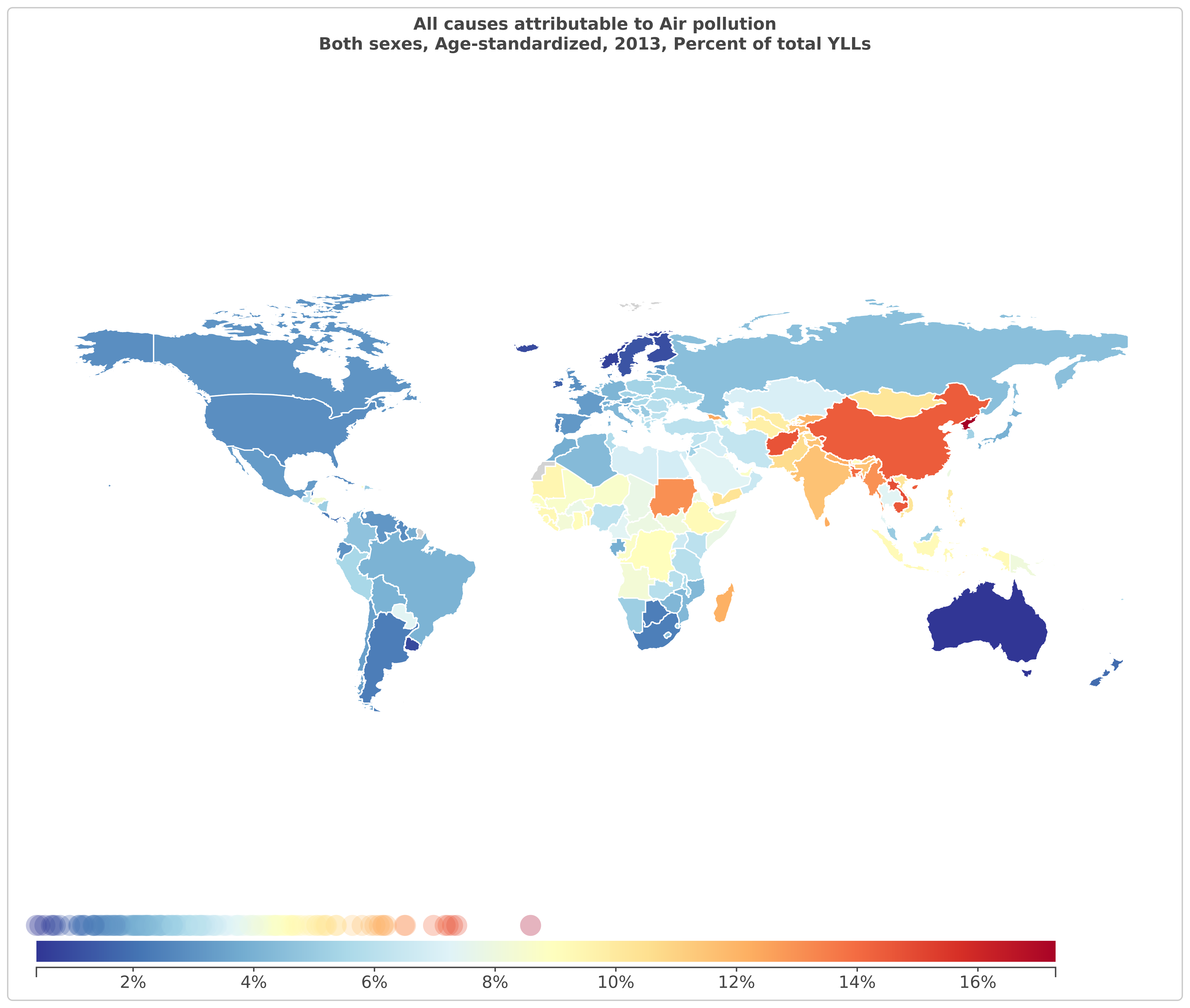According to a new report from the World Bank and the Institute for Health Metrics and Evaluation (IHME), air pollution – which can lead to lung cancer, stroke, and heart disease – cost the global economy roughly $225 billion in 2013. Air pollution, per the Global Burden of Disease Study 2013, was the fourth-leading risk factor for premature death in 2013.
“This report and the burden of disease associated with air pollution are an urgent call to action,” said IHME director Dr. Christopher J.L. Murray. “Of all of the different risk factors for premature deaths, this is one area – the air we breathe – over which individuals have little control.”
The joint report is the result of a yearlong effort by the two institutions, with IHME Assistant Professor Mohammad Forouzanfar, and affiliate faculty members Dr. Michael Brauer (University of British Columbia) and Dr. Aaron Cohen (Health Effects Institute) contributing to the report. The IHME team worked closely with World Bank researchers to produce the report’s chapter on the health impacts of air pollution.
They found that ambient pollution caused more than 2.9 million deaths in 2013, an increase of 30.7% from 1990. According to the report, in 2013 about 87% of the world’s population lived in areas exceeding World Health Organization air quality guidelines. Ambient air pollution caused 13.6% of ischemic heart disease deaths, 14.5% of stroke deaths, and 23.6% of lung cancer deaths.
Meanwhile, household air pollution – caused by burning solid fuels inside the home, to which 42.2% of the world’s population was exposed, based on estimates for low- and middle-income countries – caused 2.9 million deaths in 2013, according to the report. This number was unchanged from 1990. In addition to increasing the risk of death from causes also associated with ambient pollution exposure, household air pollution caused 16.9% of lower respiratory infection deaths and roughly 21% of cataracts (a nonfatal outcome) globally in 2013.
The map below gives a broad view of the impact of air pollution; it shows the percent of total years of life lost (YLLs) caused by air pollution overall – ambient particulate matter, ambient ozone, and household air pollution combined. Notably, in 2013 air pollution caused 14.37% of YLLs in China and 11.53% in India.
Figure 1: Percent of total YLLs caused by air pollution, both sexes, age-standardized, 2013

The economic cost of this health loss is staggering: the World Bank estimates that in 2013 air pollution led to $5.11 trillion in welfare losses, and $225 billion in lost labor income. As the report notes, pollution “is not just a health risk but also a drag on development. By causing illness and premature death, air pollution reduces the quality of life. By causing a loss of productive labor, it also reduces incomes,” particularly in developing countries, where household air pollution is present.
“Air pollution is a challenge that threatens basic human welfare, damages natural and physical capital, and constrains economic growth,” said Laura Tuck, the World Bank’s Vice President for Sustainable Development. “We hope this study will translate the cost of premature deaths into an economic language that resonates with policymakers so that more resources will be devoted to improving air quality.”
To read more, see the joint World Bank-IHME report, The Cost of Air Pollution: Strengthening the Economic Case for Action. And explore an infographic related to the report here.